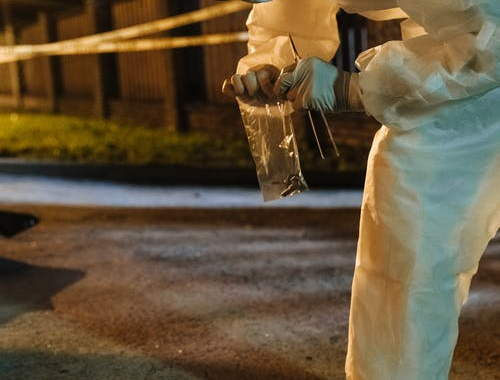The crime scene investigation process can be extremely complex based on the nature of the crime. The way officers handle a crime scene of burglary is different from that of homicide. Outdoor, indoor, and conveyance crime scenes have unique factors to consider.
However, the essential steps of an investigation process remain the same regardless of the crime. Here’s how these steps apply to an investigation.
Exterior Survey
An exterior survey is required before the investigation team enters the building. They walk around the exterior to identify any obvious evidence and keep an eye out for open windows, ladders, damaged doors, and more. This also helps determine how entry was made into the building.
Identifying the Focal Point of the Scene
The first step of the investigation process is locating the main area of the crime scene. This could be a bedroom where the attack occurred. Investigators then establish an area that’s likely to contain all relevant physical evidence.
Since safety is a major source of concern during the initial approach to the scene, potential paths of entry and exit, as well as weapons, intentional traps, and chemical hazards, are identified.
Collecting Samples at the Crime Scene
A wide range of physical evidence can be collected at the scene that is considered worthy of collection and investigation. The evidence may include:
- Biological evidence – blood, hair, body fluids, and other tissues.
- Trace evidence – vegetation, glass fragments, fibers, and soil.
- Latent print evidence – palm prints, fingerprints, and footprints.
- Digital evidence – email messages, internet logs, and cell phone records.
- Drug evidence
- Firearm evidence
- Tire track and footwear evidence
- Tool and tool mark evidence
Case of Burglary
Since the type of evidence varies with the kind of crime, the following tasks will be performed in the case of burglary:
- Photographing and documenting the scene
- Collecting low-level DNA evidence by swabbing areas of possible contact
- Locating and collecting latent fingerprints
- Collecting trace materials from likely points of entry
- Collecting items containing biological evidence
Are you looking for reliable forensics experts for a crime scene investigation process? Eclipse Forensics has got you covered. Their services include redaction, mobile devices, digital forensics, audio forensics, video forensics, and much more! With high-end software and technology, they ensure that the criminal is identified as soon as possible.
To learn more about their services, contact them today.

